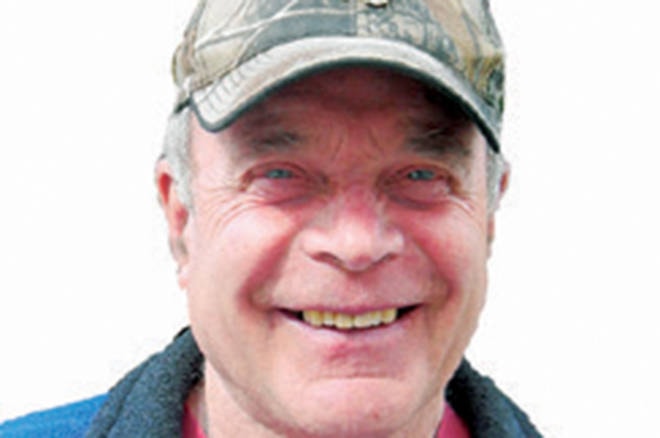Holy smokes, a wild turkey struttin it’s stuff near the Salmon Arm golf course?
Yep!
Sure as the Lord made little green apples, there it was. How’d it get there is anyone’s guess.
A few seasons back, come spring, I received a call from a chap out Mallory Road way (Gardom Lake) about nine of the big birds flying in and demolishing his neighbors garden. What should he do? Capture them in his barn, then we will turn them loose out Deep Creek way?
First I phoned Doug Jury, a biologist in Kamloops. He adamatly said do not do it. As the birds multiply, they will be a major problem to crops, farms and rural living.
A few years back a group of three were let loose alongside the highway south of Enderby. Domesticated, the coyotes got them. But as our climate changes, it is having a dramatic impact on our fish and wildlife.
For the Marriam’s wild turkeys, they are on the move, extending range from the Kootenays to the Okanagan. Elk are finding new digs here as they migrate to cooler climes. For each increasing degree in temperature, it will have a bearing on wildlife, and down the road, some species will survive, and others will struggle.
But there is more, At the recent BC Wildlife AGM in Kamloops, a biologist from Montana, including our own biologists, spoke on how industry, logging, urban sprawl, mining and road building for forestry are having a adverse effect on wildlife populations and habitat.
As more access is pushed into remote regions, wildlife move out. An example is moose moving into less desirable locations where food and vegetation are poor. The result is calves being born not as strong or healthy to survive. There is an increase in predation on newborns by wolves and bears etc.
In the Bonaparte Plateau north of Kamloops, of the 140 collared moose cows calves, 35 per cent were taken by coyotes, eight per cent by wolves, and one collared grizzly bear. A GPS Go Pro showed 32 elk moose calves devoured.
In other words, if all hunting were to stop, the increase in survival rates of young animals to survive to maturity would remain the same, due to predation, habitat loss and human activity.
How are our trout doing is another question. On the Big Shuswap, reports tell me were getting a lot of “skinny fish”, or underweight specimen. Rainbows depend on salmon fry for protein and nutrients to be healthy robust fish. With sub-dominant runs of sockeye, chinook returning from their natal streams, as well a growing population of lake trout, and large course fish taking their toll on salmon fry, this reduces a valuable food for rainbows.
Also there is more pressure on the trout from a groing number of anglers out there after the “big ones.”
Athough angling has been good, a lot of smaller rainbows have been reported as well. Most anglers know a keeper has to be 50 centimetres and recorded. More boat checks are planned for the upcoming season, by CO’s as well. Include is Mara Lake and Mabel lake and now the Shuswap river on tubers. Last season, 764 vessels, and 1,549 folks were checked with 101 charges and 748 warning issued.
